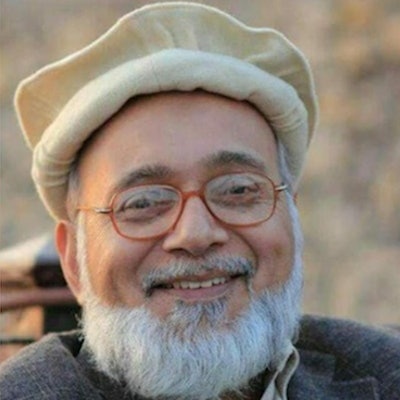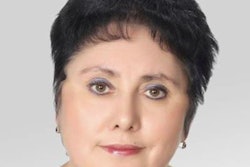
Dr. Arshad Munir, general secretary of the Pakistan Islamic Medical Association (PIMA), has died of COVID-19. He contracted the disease while working as a radiologist at a hospital in Faisalabad, according to local media reports.
Munir, 61, was admitted to a private hospital and put on a ventilator for several days due to serious breathing problems, ARY News reported on 6 April.
 Dr. Arshad Munir. Photo courtesy of the PIMA.
Dr. Arshad Munir. Photo courtesy of the PIMA.Fellow radiologist Dr. Khubaib Shahid, the central president of PIMA, has expressed his condolences over the loss of Munir. Shahid is a professor of radiology at Fatima Memorial Hospital in Lahore. He was elected central president last September for the 2020-2022 session, having served as president of PIMA's Punjab chapter in 2013-2015 and as central general secretary between 2016 and 2020.
Recently, 110 doctors at Lahore's Services Hospital were infected with the novel coronavirus and more than 10 of them are said to be in a precarious condition, noted the article in ARY News.
Another doctor in Khyber Pakhtunkhwa, Dr. Muhammad Taufiq, died of the coronavirus on 5 April, raising the death toll of doctors to have died from the virus to 51 in this province alone, the TLTP News Agency reported in an article posted on 7 April by the Pakistan Observer.
Taufiq contracted COVID-19 while performing his duties at the Police Hospital and was self-isolating at home. Following his death, doctors in the province called upon the government to take emergency measures to ensure that the lives of these frontline workers were protected.
Coronavirus has claimed 103 more lives in Pakistan during the past 24 hours, taking the overall death toll to 14,924, the Pakistan Observer reported. The latest statistics of the National Command and Operation Centre (NCOC) show the number of new COVID-19 cases was 3,953 during the period. The total count of active cases was recorded at 63,102 in the country and the positivity rate of COVID-19 tests stood at 8.47%, the NCOC stated.
The government launched a vaccination for the general public on 10 March, starting with older people, but Pakistan is largely depending on the GAVI/WHO COVAX initiative for developing nations and donations from China, according to an article in Pakistan Today.
In a report, Bloomberg claimed it would take a decade for Pakistan to inoculate 75% of its population, citing the global disparity between the number of jabs administered to people in rich and developing nations, the report stated. Based on Bloomberg’s vaccine tracker, the story showed countries like the US (328 million population), UK (66.65 million) and Israel (9.05 million) are likely to reach the 75% target within three months while others, including Pakistan (over 216 million), are expected to immunize the same size of their population in about a decade.
ECR session on Pakistan
Healthcare in Pakistan came under scrutiny at a special session during ECR 2019.
The actual burden of infections with the hepatitis B and C virus (HBV, HCV) is approximately 7%, making Pakistan a country with one of the highest prevalence rates for viral hepatitis in the world, noted an article on the session in the ECR Today newspaper. Approximately 10 million people in Pakistan are infected with HCV alone. Following the acquisition of the virus, acute HCV infection can progress to chronic infection, which in turn is associated with several morbidities, such as liver cirrhosis and cancer.
Malaria, the polio virus (which still circulates in core reservoirs across Pakistan, although with less intensity), dengue outbreaks, and other infectious diseases also pose a serious threat to public health.
Another major health issue is tuberculosis (TB). More than 400,000 people are newly infected and about 70,000 die from the disease every year. Globally, Pakistan ranks fifth among the 22 high TB burden countries and has the fourth highest prevalence rate of multidrug-resistant TB.
Radiologists in the nation have played an important role in developing a living donor liver transplant program, ECR Today reported.
"In light of the significantly high prevalence of viral hepatitis in Pakistan, it was imperative to implement an indigenous liver transplantation program. At our center, living donor liver transplant was initiated in 2012, and so far, more than 650 transplants have been performed," noted Dr. Atif Iqbal Rana, from the department of radiology, Shifa International Hospitals, Islamabad.
"Our contribution includes preoperative CT-based donor work-up to calculate the liver attenuation index, liver volumetric analysis, and the delineation of vascular anatomy for surgical planning. Also, all patients undergo an MR cholangiopancreatography," he continued. "In the postoperative period, both recipient and donor may require imaging to look for complications such as vascular ones or biliary strictures, which are the most common recipient complication in our patients, occurring in about 22% of all cases. Our interventional radiologists play an important part in treating these and other complications."



















